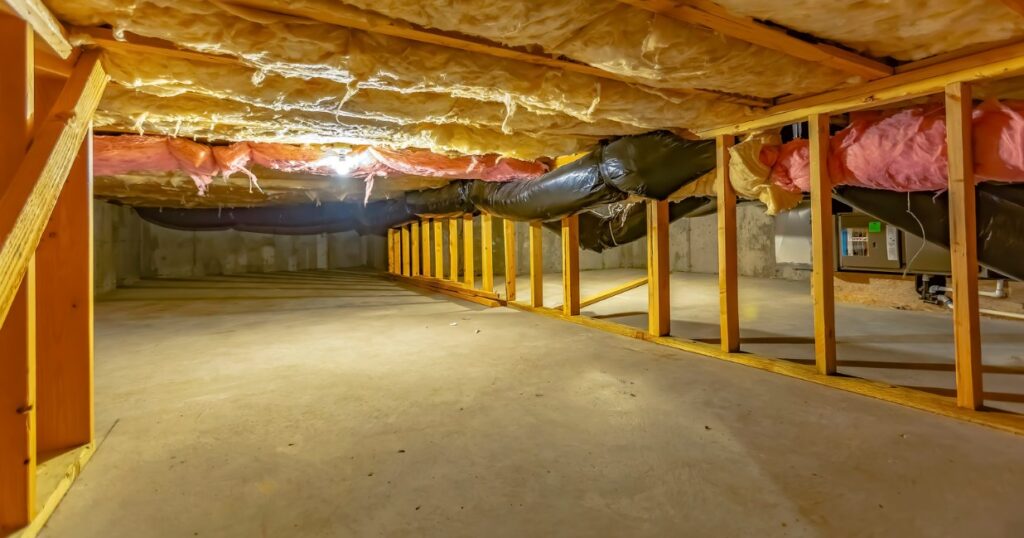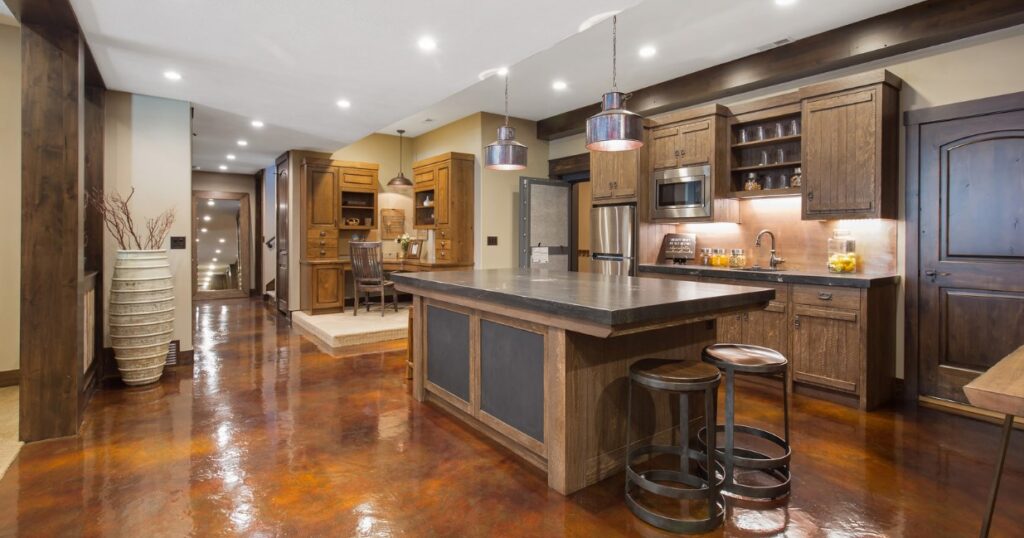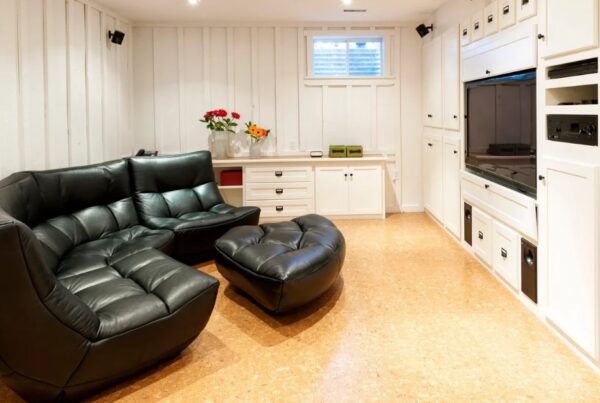Basements are often an untapped treasure in a home, offering an incredible opportunity to add both functionality and value to your living space. With the right vision, a basement renovation can transform a space into anything from a cozy family room or home office to a guest suite or entertainment hub. However, many homeowners hesitate to take on basement renovations, often citing concerns about the potential costs, difficulties in creating the right design, or simply not knowing where to start. This blog is here to help. By providing practical tips and advice, we aim to guide you through the process and equip you with the confidence to turn your basement into a space that truly enhances your home.
Understanding the Benefits of Basement Renovations
Adding Usable Space
A finished basement is one of the most effective ways to expand the functional space in your home without the need for costly extensions. It can serve as an additional living area, offering room for a growing family, or provide a quiet home office for remote work. For those who love to entertain, a basement can be transformed into a recreational hub, complete with a home theatre or bar area. With a bit of creativity and planning, the possibilities for your basement are virtually limitless, making it an incredibly versatile addition to your home.
Increasing Home Value
Investing in a basement renovation can yield significant financial benefits, especially if you plan to sell your home in the future. A professionally finished basement not only adds square footage to your property but also elevates its overall appeal to potential buyers. Many homebuyers look for properties with additional, well-designed spaces, and a finished basement can be a strong selling point. By turning an underutilized area into a functional and attractive part of the home, you can potentially increase your home’s resale value and recover a substantial portion of your renovation costs.
Assessing Your Basement’s Current Condition

Check for Structural Issues
Before any renovation begins, it’s crucial to inspect your basement for structural issues. Look closely for cracks in the walls and foundation, as well as any signs of sagging or uneven floors. Even small cracks can become significant problems if left unaddressed, leading to costly repairs down the line. Additionally, check for leaks or other indications that your foundation might be compromised. Addressing these issues early ensures the structural integrity of your basement and provides a safe and stable foundation for your renovation project.
Identify Moisture or Water Damage
One of the most common issues in basements is moisture or water intrusion. Signs of water damage include discoloration on walls, persistent musty odours, and visible mould growth. Moisture can not only harm the materials in your basement but also encourage mould, which poses health risks to inhabitants. Waterproofing should be a critical first step in your renovation process. Consider actions like fixing leaks, installing sump pumps, and applying waterproof coatings to walls and floors to prevent future water damage and ensure a dry, healthy living space.
Evaluate Ceiling Height and Layout
Ceiling height and overall layout are key factors that can greatly impact the functionality of your renovated basement. Low ceilings, exposed ductwork, or support beams might restrict certain design choices, making it necessary to get creative with your plans. If the existing ceiling height feels too low, consider options like lowering the floor (if feasible) or strategically rearranging ducts and pipes. A well-thought-out layout can maximize the space’s potential and ensure it suits your needs, whether you’re creating a home theatre, guest suite, or workspace.
Planning Your Basement Renovation
Define Your Goals for the Space
Before beginning any renovation project, it is essential to clearly define the purpose of the space. Your goals will shape every decision, from layout to materials. Consider how the basement can best serve your household’s needs. Popular options include transforming it into a cozy home office, a versatile entertainment room, a lucrative rental unit, or a fully outfitted gym. Take time to envision how the space will function and the features it will require, ensuring that your renovation efforts align with your long-term vision.
Create a Budget
A well-planned budget is the foundation of a successful renovation. Start by estimating the costs for materials, labour, and additional expenses such as furnishings or decor. Be sure to allocate funds for unexpected complications, such as hidden water damage or the need for additional electrical work. It’s highly recommended to consult with professionals, as they can provide more accurate cost estimates and help identify potential challenges early in the process. A realistic budget will help prevent overspending and keep your project on track.
Obtain Necessary Permits
Most basement renovations involve updates to plumbing, electrical systems, or structural elements, all of which typically require permits. These permits ensure that the work meets safety standards and complies with local building codes. Failing to obtain the proper permits can lead to costly fines, insurance issues, or complications when selling your home. Check with your local building authority to determine which permits you need for your project, and prioritize this step to avoid delays during construction.
Hiring the Right Professionals
General Contractors
Hiring a general contractor can significantly simplify the renovation process. General contractors act as the project manager, overseeing all aspects of the endeavour from start to finish. They coordinate schedules, hire and supervise subcontractors, and ensure that all work adheres to building codes and design plans. By managing these details, general contractors provide homeowners with peace of mind and help streamline the workflow, saving time and avoiding unnecessary stress.
Specialized Experts
Certain tasks in a renovation project require the expertise of specialized professionals. For example, plumbers should be hired for tasks involving water lines, fixtures, and drainage systems, while electricians are essential for wiring, lighting installations, and ensuring electrical safety. Interior designers can add value by creating functional and aesthetically pleasing spaces. Knowing when to hire these experts is critical to achieving professional-quality results and ensuring that the job is done safely and correctly.
Selecting the Right Professionals
Finding the right professionals for your renovation requires careful vetting and research. Start by asking for recommendations from friends or family and reading online reviews to assess the reputation of potential contractors. Verify their licenses, certifications, and insurance to ensure they meet industry standards. Additionally, request multiple quotes to compare pricing and services before making a decision. Clear communication and a detailed contract outlining expectations will set the foundation for a successful partnership.
Preparing for the Renovation
Clearing and Cleaning the Space
Before any renovation work begins, it’s essential to declutter and clean the basement thoroughly. Start by sorting items into categories such as “keep,” “donate,” and “discard.” Use clear storage bins for items you plan to retain, ensuring they are properly labelled and protected. Dispose of broken or unused items responsibly to free up space. Once the area is decluttered, perform a deep clean to remove dust, debris, and any potential allergens. This process ensures a safer, more accessible workspace for contractors and a smoother renovation experience.
Addressing Moisture and Insulation
Ensuring the basement is free from moisture issues is critical to the success of your renovation. Begin by inspecting the space for signs of water damage, leaks, or mould. Leaky areas should be sealed using waterproofing materials, while additional measures like installing a sump pump or vapour barriers may be necessary to prevent future moisture problems. Proper insulation is also vital for maintaining a comfortable and energy-efficient environment. Choose insulation materials suitable for basements, such as rigid foam or spray foam, which are resistant to moisture. This step will help create a dry and well-insulated foundation for your ongoing improvements.
Planning for Disruptions
Renovations can be disruptive, so thoughtful planning can help minimize their impact on your daily routine. Establish a temporary storage solution for displaced belongings, such as renting a storage unit or designating another area of your home for storage. Communicate with contractors to develop a timeline and understand the scope of activities that may cause noise, dust, or limited access to the basement. If the renovations significantly impact your living conditions, consider creating temporary alternatives for important spaces, like setting up a small workspace or recreation area elsewhere in your home. Being proactive about these disruptions can make the process much less stressful for everyone involved.
Tips for Designing Your Dream Basement

Maximizing Space and Functionality
When working with small or awkward spaces, creativity is key. Built-in storage solutions can help you maximize every square foot while maintaining a clean and organized appearance. For instance, custom shelving tucked into underutilized corners or beneath staircases can transform otherwise wasted areas into functional storage. Multi-purpose layouts are another excellent choice, allowing areas to serve dual functions, such as combining a guest bedroom with a home office or adding a pull-out sofa to a recreational space. Thoughtful planning and innovative ideas can ensure your basement is not only stylish but also practical.
Choosing Durable and Stylish Materials
Selecting the right materials for a basement ensures that the space is both resilient and visually appealing. For flooring, consider options such as vinyl planks, tiles, or engineered hardwood, all of which can withstand potential moisture issues while maintaining an attractive finish. Moisture-resistant drywall and paint are ideal for walls to prevent damage over time. Additionally, finishes like stone, exposed brick, or wood panelling can add character and warmth to the space. Choosing materials specifically designed for the unique conditions of basements will enhance both the durability and style of your finished design.
Lighting and Ventilation
Lighting and ventilation play a crucial role in creating a welcoming basement environment. To maximize natural light, consider installing egress windows or light wells, which also add safety and increase functionality. Complement natural light with layered artificial lighting, including overhead fixtures, floor lamps, and task lighting, to ensure all areas are well-lit. Proper ventilation is equally important to maintain air quality and prevent issues like dampness or odours. Installing a good HVAC system or dehumidifier can regulate airflow and humidity levels. Combined, these elements will make your basement feel bright, airy, and comfortable.
Common Pitfalls to Avoid
Overlooking Waterproofing
One of the most critical aspects of basement remodelling is ensuring proper waterproofing. Skipping this step can result in severe consequences, such as water seepage, mould growth, and structural damage, all of which can lead to costly repairs down the line. Investing in high-quality waterproofing solutions and addressing any potential sources of leaks beforehand ensures the durability and longevity of your basement space.
Failing to Plan for Utilities
Plumbing, electrical outlets, and HVAC systems are often overlooked during the initial design phase of basement renovations, which can lead to significant complications later. Proper planning for these utilities not only ensures functionality but also avoids the need for expensive modifications after construction is complete. Consulting with experts to map out utility placement early on can save time, money, and frustration in the long run.
Trying to DIY Complex Projects
While the DIY approach can be tempting to save money, tackling complex basement projects without professional assistance can pose serious risks. Tasks like structural modifications, electrical wiring, and plumbing require specialized skills and knowledge to ensure safety and compliance with local codes. Hiring qualified contractors for major renovations mitigates potential hazards and guarantees high-quality results.
Conclusion
Starting a basement renovation project may seem daunting at first, but with a clear plan and the right preparation, the process can become manageable and rewarding. Begin by assessing the space and determining your goals for the renovation. Carefully plan your budget and research design options that align with your vision. Don’t forget to address potential challenges, such as moisture control and proper insulation, during the planning phase. When tackling complex tasks like structural changes, electrical work, or plumbing, prioritize hiring experienced professionals to ensure safety and compliance with local codes.
With a thoughtful approach and attention to detail, transforming your basement into a functional and appealing space is entirely achievable. Take the first step today by exploring the possibilities and envisioning how your finished basement can enhance your home’s value and your lifestyle. Remember, every successful renovation project starts with a well-organized plan and the confidence to bring your ideas to life.
Are you ready to turn your basement dreams into reality? Our team is here to guide you every step of the way, ensuring a smooth and successful renovation process tailored to your needs. Reach out today to schedule a free consultation and get started on your project. Visit our Contact Page to take the first step toward creating a functional, beautiful space you’ll love!



